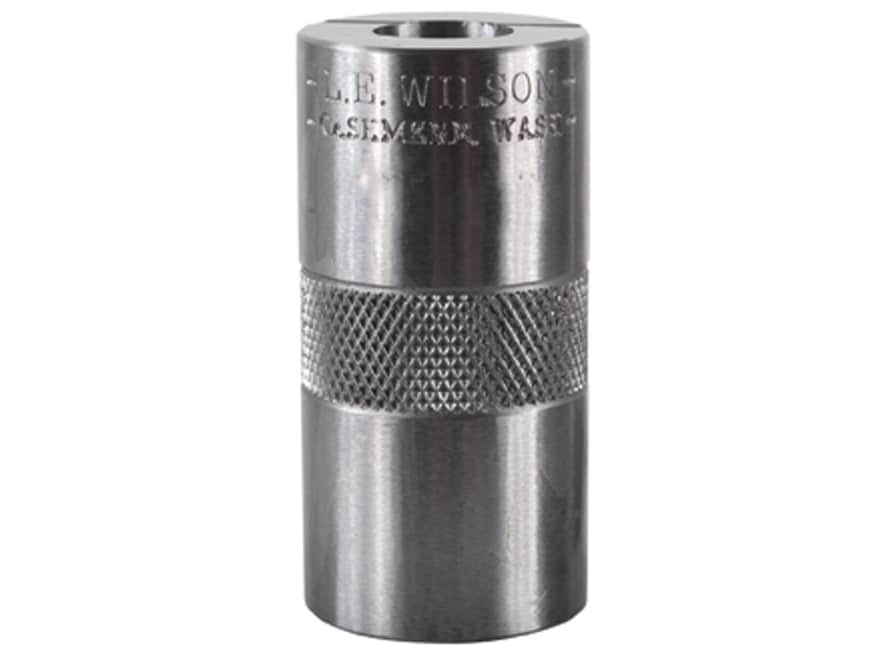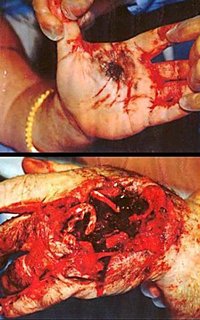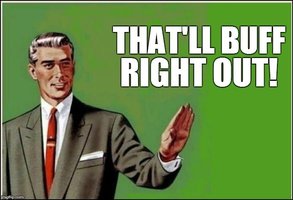I was recently sizing some loaded .223 in a Redding body die and happened to grab a round that was a little too dry of lube.....well sure as the day is long it stuck in the die and the rim was damaged upon trying to pull it out using the ram.
Sooooo, having what is basically a loaded gun, I decided to remove the bullet by using the pointed shaft of the pictured spring loaded center punch. I mounted the die back in the press, inserted the center punch and wobbled it around the bullet loosening the crimp a little bit. The body die does not contact the neck of the cartridge so the case mouth was free to expand by pushing the bullet around.
The bullet then fell back into the casing and I used the centerpunch to further expand the case mouth. I then hit the bullet end of the die on the end of the block of wood ( like an inertial bullet puller) and the bullet and powder came out on the fourth hit.
Having emptied the casing I put the die in my freezer for 3 hours then put it back in the press and used the AK pistol grip screw and hammer to tap the casing out. It came out quite easily. The AK screw is hardened and fits pretty well in the .223 case mouth and has enough length to reach the web of the casing in the die.
And that's how its done......W.E.C.S.O.G. style.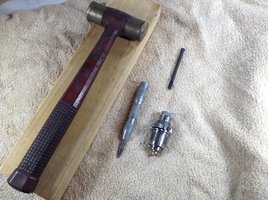
Disclaimer: This is not a recommendation for anyone to do this and you take your own chances. This is just an explanation of how I did it quite successfully. It can be done.
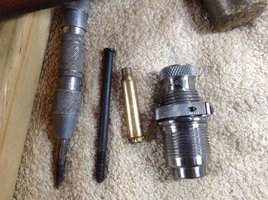
Sooooo, having what is basically a loaded gun, I decided to remove the bullet by using the pointed shaft of the pictured spring loaded center punch. I mounted the die back in the press, inserted the center punch and wobbled it around the bullet loosening the crimp a little bit. The body die does not contact the neck of the cartridge so the case mouth was free to expand by pushing the bullet around.
The bullet then fell back into the casing and I used the centerpunch to further expand the case mouth. I then hit the bullet end of the die on the end of the block of wood ( like an inertial bullet puller) and the bullet and powder came out on the fourth hit.
Having emptied the casing I put the die in my freezer for 3 hours then put it back in the press and used the AK pistol grip screw and hammer to tap the casing out. It came out quite easily. The AK screw is hardened and fits pretty well in the .223 case mouth and has enough length to reach the web of the casing in the die.
And that's how its done......W.E.C.S.O.G. style.

Disclaimer: This is not a recommendation for anyone to do this and you take your own chances. This is just an explanation of how I did it quite successfully. It can be done.

Last edited:

![Popcorn [popcorn] [popcorn]](/xen/styles/default/xenforo/smilies.vb/043.gif)
![ROFL [rofl] [rofl]](/xen/styles/default/xenforo/smilies.vb/013.gif)
